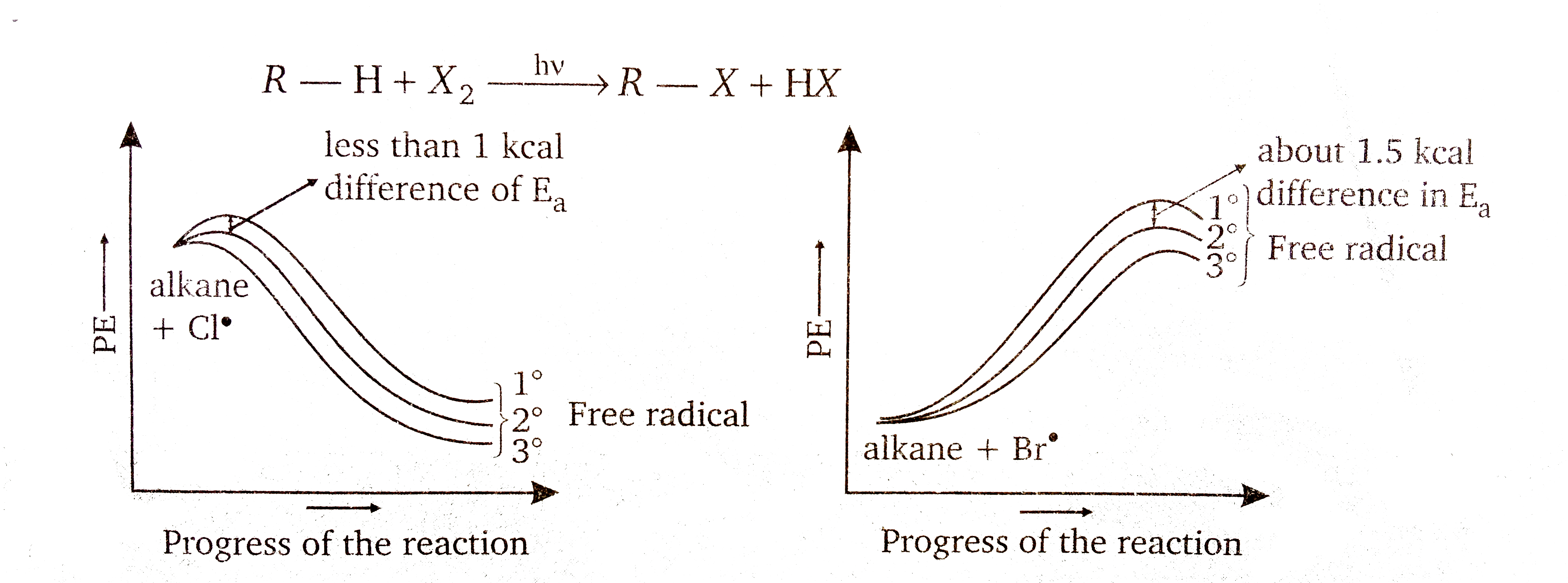The ratio of products, 1-chloropropane to 2-chloropropane respectively formed in the chlorination of propane if all the hdrogens are abstracted at equal rates is
A
50:50
B
25:75
C
75:25
D
12.5:87.5
Text Solution
The correct Answer is:C
CH3−CH2−CH3
6×1=6,2×1=2
100x6/8=75,100×2/8=25
|
Topper's Solved these Questions
- ALKANESBOOK - NARAYNACHAPTER - ALKANESEXERCISE - level-4
11 Videos
- ALKANESBOOK - NARAYNACHAPTER - ALKANESEXERCISE - level-1 (H.W)
12 Videos
- ALKANESBOOK - NARAYNACHAPTER - ALKANESEXERCISE - Level-2 (C.W)
12 Videos
- ACIDS & BASESBOOK - NARAYNACHAPTER - ACIDS & BASESEXERCISE - EXERCISE-III
43 Videos
- ALKENESBOOK - NARAYNACHAPTER - ALKENESEXERCISE - Additional Straight O Q
8 Videos
Similar Questions
Knowledge Check
The ratio of products, 1 - chloropropane to 2 - chloropropane respectively formed in the chlorination of propane if all the hydrogens are abstrated at equal rates is
A50:50B25:75C75:25D12.5:87.51 - Chloroprapane and 2 - chloropropane are
APosition isomersBChain isomersCFunctional isomersDOptical isomersHalogenation is a substitution reaction, where halogen replaces one or more hydrogens of hydrocarbon

Chlorine free radical make 1∘,2∘,3∘ radicals with almost equal ease, whereas bromine free radicals have a clear preference for the formation of tertiary free radicals. So, bromine is less reactive, and more selectrive whereas chlorine is less selective and more reactive.
The relative rate of abstraction of hydrogen by Br∗ is
3∘1600>2∘82>1∘1
3∘5>2∘3.8>1∘1
What would be the product ratio x/y in the chlorination of propane if all the hydrogen were abstracted at equal rate?
CH3−CH2−CH3Cl2−−−−−→hvCH3−CH2−CH2(x)−Cl+CH3−C∣Cl(y)H−CH3A13B31C91D19
A mixture of 1− chloropropane and 2− chloropropane which treated with alcoholic KOH gives
View SolutionA mixture of 1−chloropropane and 2−chloropropane when treated with alcoholic KOH, it gives
View SolutionA mixture of 1−chloropropane and 2−chloropropane when treated with alcoholic KOH, it gives
View SolutionA mixture of 1−chloropropane and 2−chloropropane when treated with alcoholic KOH, it gives
View SolutionWhen 1-chlorobutane and 2-chloropropane are treated with metallic sodium in ether, one of the products, we get is
View Solution
